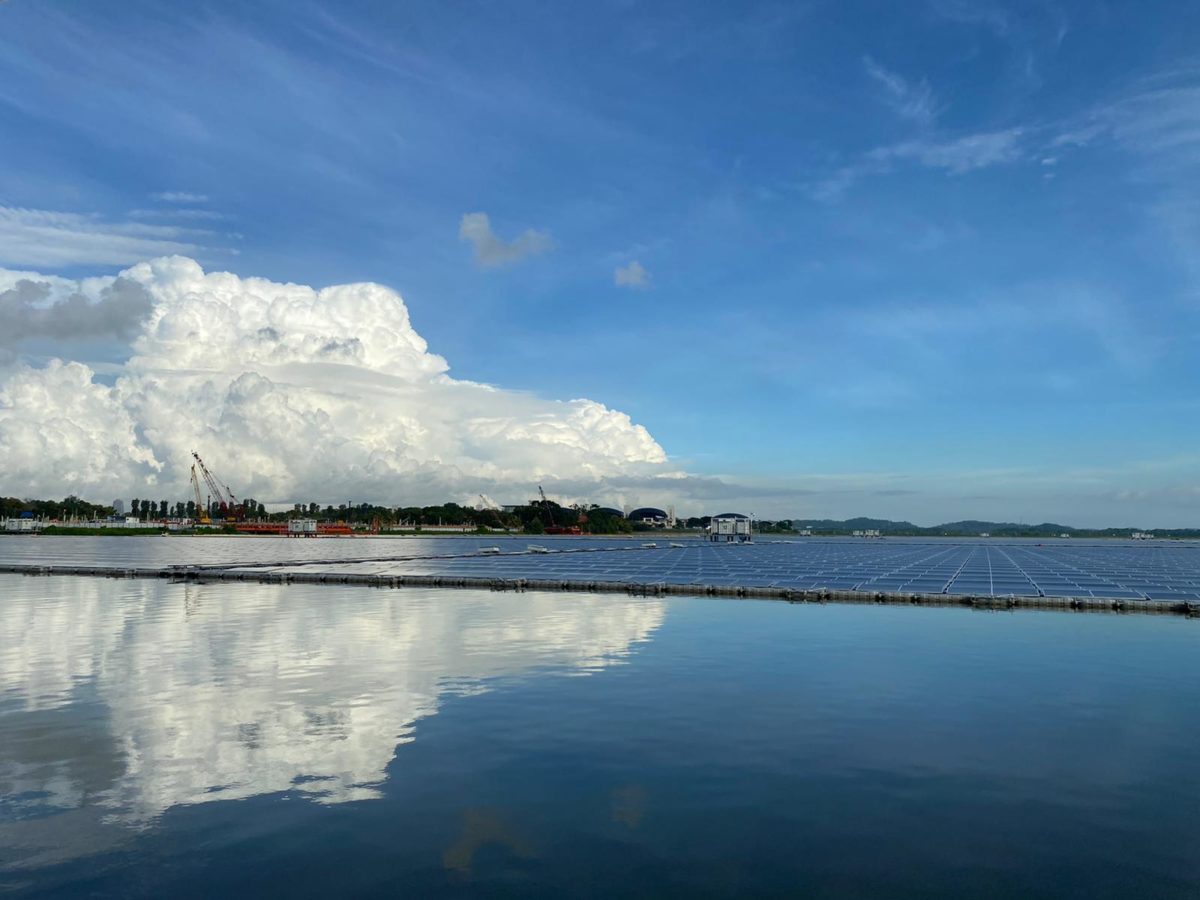Even though the market is set to double in 2021, floating PV (FPV) may still be seen as a niche by many countries around the world, but not Singapore. The city-state which is already home to the world’s largest offshore floating PV (OFPV) farm, as well as the world’s largest FPV testbed at the Solar Energy Research Institute of Singapore (SERIS), is now home to an operational 60 MW FPV array on Tengeh Reservoir.
Sembcorp Floating Solar Singapore, a unit of utilities and marine group Sembcorp Industries, began construction on the system back in June 2020. Now the system’s 12,556 Trina Solar 210 Vertex dual-glass modules, which cover a surface area the size of 45 football fields, are in full commercial operation and delivering green energy from Singapore’s main reservoir of drinking water via a 25-year power purchase agreement (PPA) with national water agency, the Public Utilities Board (PUB). The PPA will see approximately 7% of its energy demand provided by the FPV array.
At the Virtual Leaders Summit on Climate held in April 2021 and convened by US President Joe Biden, Singaporean Prime Minister Lee Hsien Loong said that in order for Singapore “to overcome our small size and lack of resources, and achieve our emission reduction goals, Singapore must also innovate and use technology extensively.” But Singapore is certainly not all talk, it can walk the walk, and more than that, it is doing its walking on water.
The system will generate 77,259,302 kWh of clean electricity annually, offsetting 57,777 tonnes of CO2 emissions and ensuring that Singapore joins a select group of countries with 100% green waterworks.
“The application of Trina Solar’s 210 Vertex modules in Singapore’s floating project has been a successful showcase,” said Zhao Lei, Trina Solar’s project leader in the China region. “After the Singapore project, more and more country markets show confidence and recognition of the quality of Trina Solar’s 210 Vertex modules. Our brand has earned its wider reputation overseas.”
PUB said in an earlier statement that they sought double-glass PV modules like those supplied by Trina Solar because they needed to be durable enough to perform in wet and humid conditions for 25 years. The panels themselves are supported by food-grade quality high density polyethylene (HDPE) floats which are UV-resistant, a necessity to protect the floats from degradation.
Singapore installed its first FPV system as a 1 MWp testbed on the Tengeh Reservoir in 2016. Now that large-scale FPV is now successfully in operation, Singapore will look to repeat the process across its many reservoirs and waters.
This content is protected by copyright and may not be reused. If you want to cooperate with us and would like to reuse some of our content, please contact: editors@pv-magazine.com.









By submitting this form you agree to pv magazine using your data for the purposes of publishing your comment.
Your personal data will only be disclosed or otherwise transmitted to third parties for the purposes of spam filtering or if this is necessary for technical maintenance of the website. Any other transfer to third parties will not take place unless this is justified on the basis of applicable data protection regulations or if pv magazine is legally obliged to do so.
You may revoke this consent at any time with effect for the future, in which case your personal data will be deleted immediately. Otherwise, your data will be deleted if pv magazine has processed your request or the purpose of data storage is fulfilled.
Further information on data privacy can be found in our Data Protection Policy.